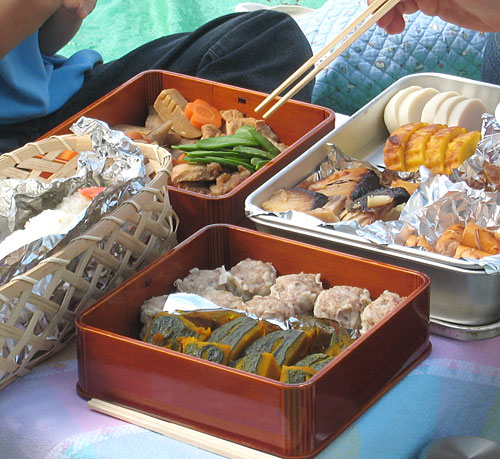
A regular family outing bento (photo by Michiko Ebina)
(Note: This is in part a belated response to the New York Times blog post about bento boxes that appeared in September. I had started it some weeks ago but didn't have the time to finish, until now. Please also read the very thoughtful forum discussion about the post.)
The New York Times blog post about Beauty and the Bento Box was, after the recent balanced article about bento boxes that appeared in the same publication, was rather disappointing. To see yet another piece in the mainstream media focusing just on the aesthetics of bentos, and specifically on charaben, gives me a "What, again?" sort of resigned feeling. The question that they posed to a group of experts (only one of whom is Japanese...I wonder how many have even had a homemade bento for lunch?) was a leading question if there ever was one: "What does the care devoted to the visual details in a packed lunch suggest about the culture? Why is such value placed on aesthetics in everyday life in Japan?".
I've repeated this many times on this site already, but the basic definition of a bento box is "a meal in a box", as the subtitle of this site says. Bentos can be for any meal. They can be made by and for anyone. They are often portable, but not always (as for bento box lunches served at sit-down restaurants). In short, bentos are just part of everyday life for most Japanese people. Charaben are just one category of bentos.